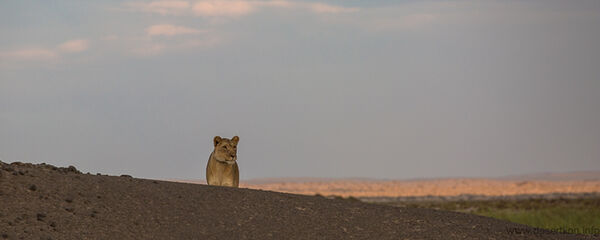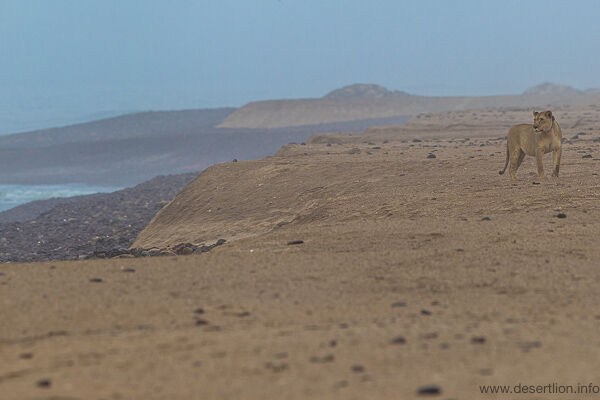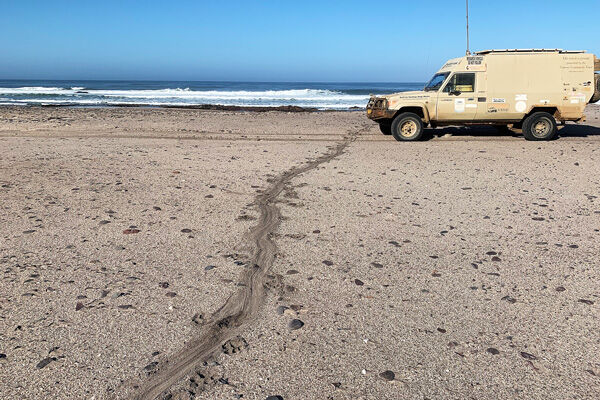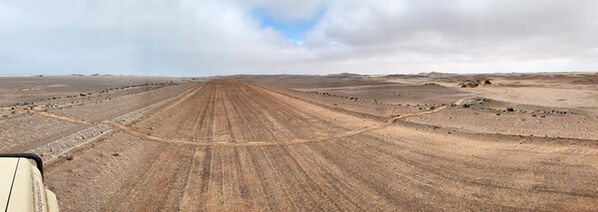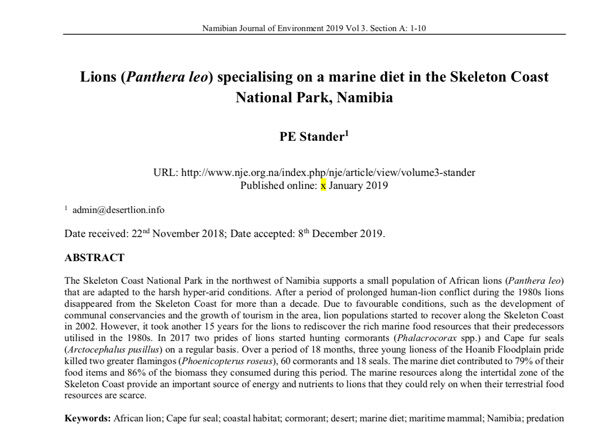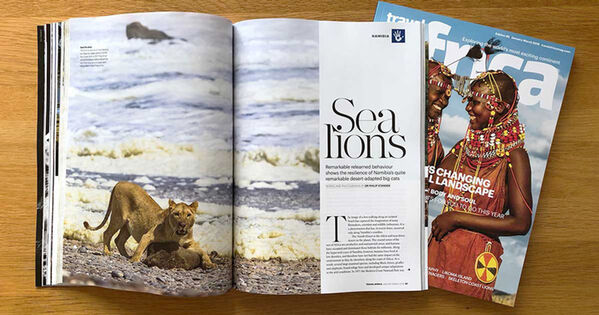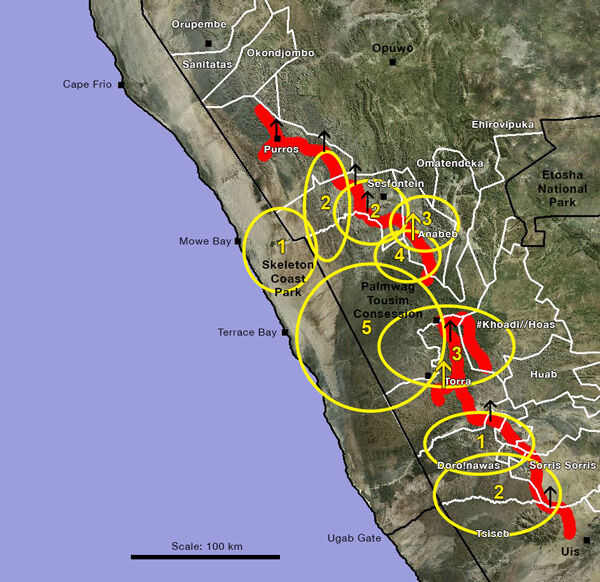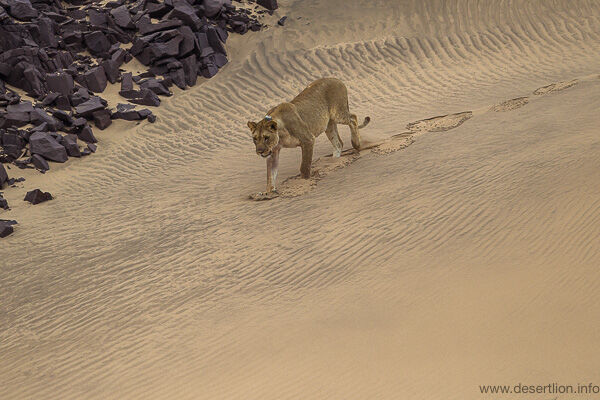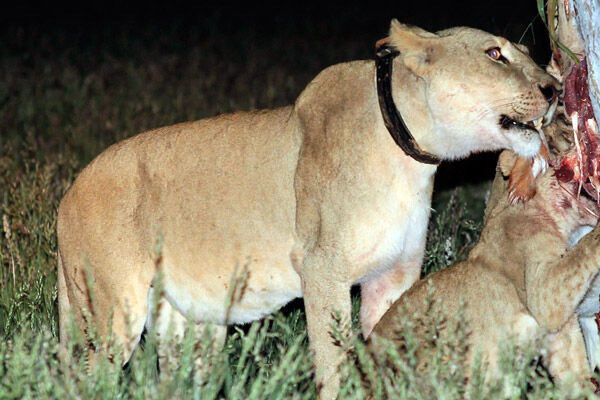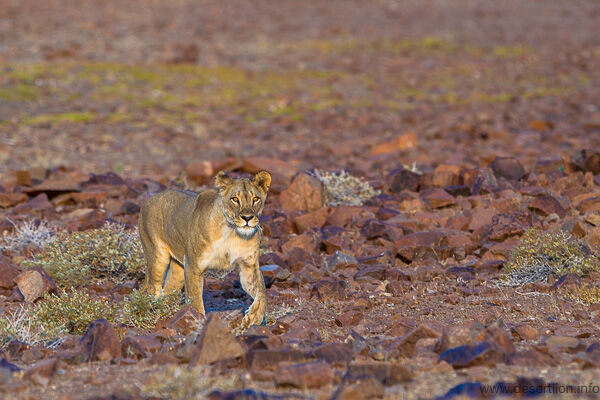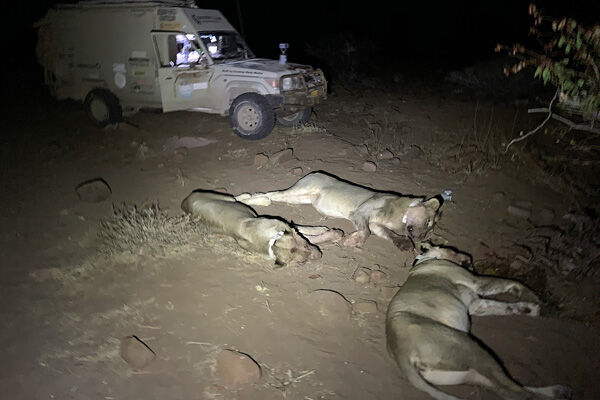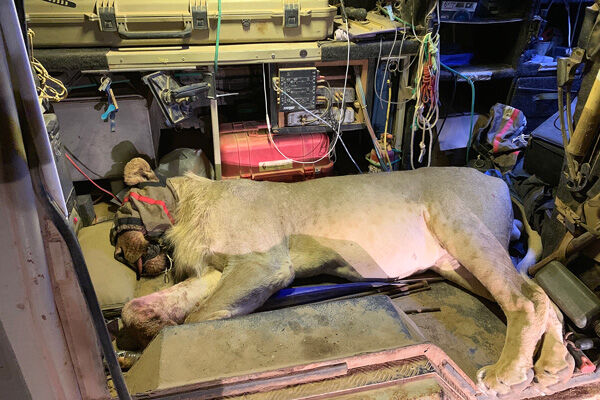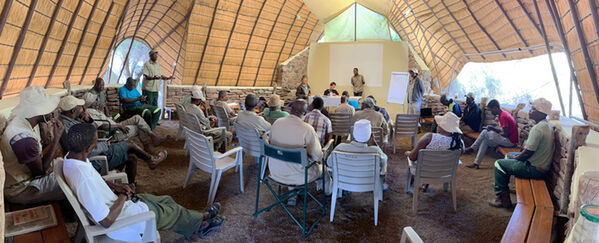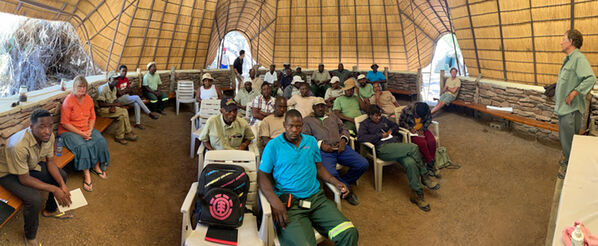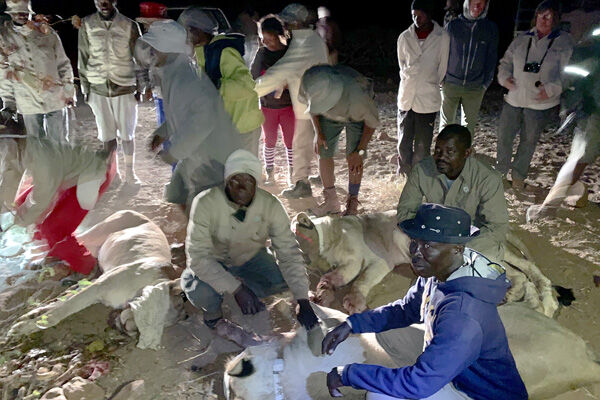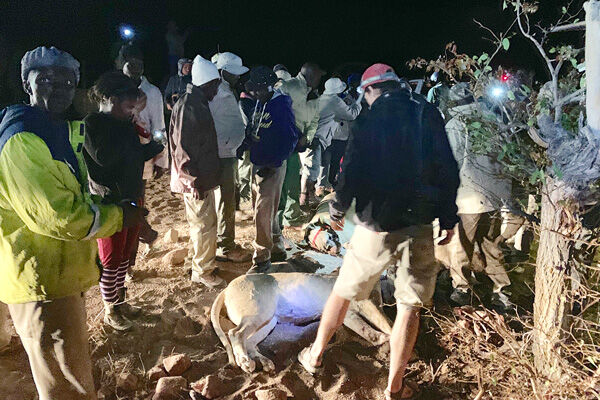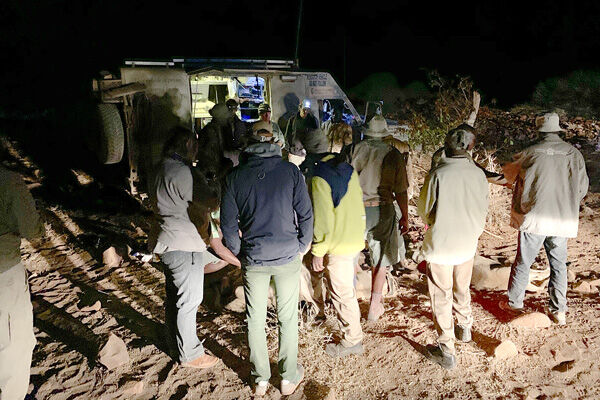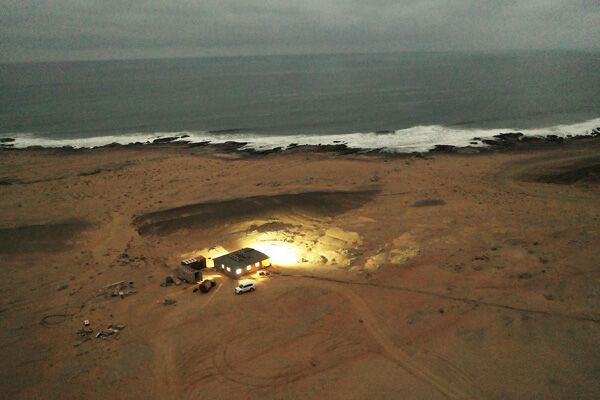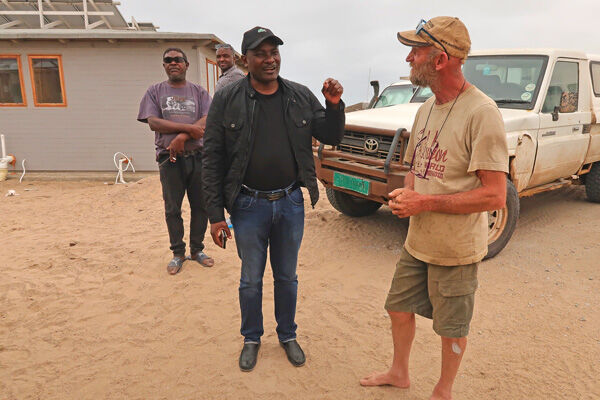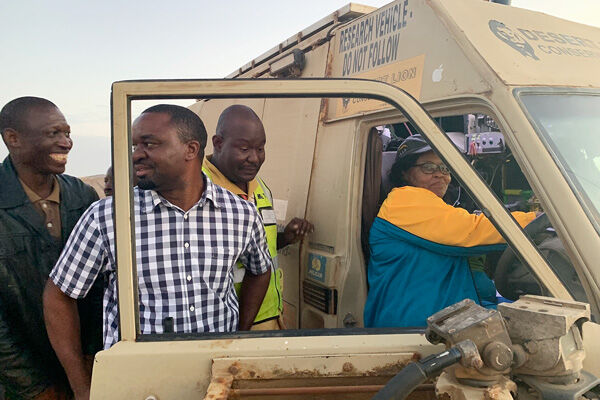Coastal Lions
Tuesday 19 February 2019
The “Orphan” lionesses continued to utilise marine food items and their activities were monitored closely. Towards the end of 2018 the lionesses encountered people along the coast that illegally use the area for fishing and tourism. On several occasions these encounters resulted in conflict that resulted in the lionesses now avoiding the coastline during the day. They still occasionally forage along the coast and the inter-tidal zones at night. When the lionesses capture a Cape fur seal, they now drag the carcass far inland (see photos below) presumably in an effort to avoid conflict with humans.
The return of lions to the Skeleton Coast and their utilisation of marine food resources is a significant development for the area. Results of the ongoing research and monitoring of the coastal lions were published in the Namibian Journal of Environment and Travel Africa magazin.
Status of the Early-warning and monitoring systems
The implementation of the NW Human-lion Conflict Management Plan is ongoing. Since mid-2018 a total of 23 lions were fitted with radio collars in support of the Early-warning system outlined in the Management Plan. There are now two functional Early-warning logger corrals (at Driefontein in the Torra Conservancy and at Mbakondja in the Anabeb Conservancy) with Early-warning collars fitted to lions that utilise the surrounding areas.
The map below indicates, in yellow, the locations of the two functional Early-warning logger corrals (arrows) and the number of lions, with their approximate home ranges, fitted with Early-warning collars (N = 20) and satellite collars (N = 3).
Second Satellite Early-warning collar
The first proto-type Namtag satellite Early-warning radio collar was fitted to a lioness (Xpl-69) at Okongwe in Oct 2018. The collar performed well and diagnostics checks produced good results. The second satellite Early-warning collar was fitted to the 12-year old lioness Xpl-67 of the Agab Pride on 12 Feb 2019 near Driefontein. Xpl-67 was first darted at the age of 18 months at Driefontein on 14 May 2010 after killing livestock. She and the rest of her pride were translocated back to the Agab River. A few years later, at the age of 4 years, she was fitted with a radio collar (photo below) that unfortunately failed and dropped off.
Lions in the Agab / Springbok River area
During February 2019, the Agab Pride that occasionally move past Driefontein were located. An adult lioness (Xpl-67) and two sub-adult males were immobilised and fitted with Early-warning collars.
Training
A training course for a large group of Lion Rangers from six different conservancies, including Tsiseb, Sorris Sorris & #Khoadi//Hoas, were held at Wereldsend between 11-15 Feb 2019. The opportunity was used to expose the Lion Rangers to practical fieldwork and they participated in the darting and radio-collaring of the three lions near Driefontein.
Mowe Bay Research Station
The refurbishment of the Mowe Bay cabin continued during the end of Dec 2018 and early 2019. With assistance from numerous supporters in Swakopmund, the cabin was upgraded and developed into a functional research base-station.
The Hon. Pohamba Shifeta, Minister of Environment and Tourism, and the Hon. Bernadette Jagger, Deputy Minister of Environment and Tourism as well as the newly appointed Chief Control Warden for the Kunene Region, Mr Andre Burger, visited the Mowe Bay cabin during this period.

